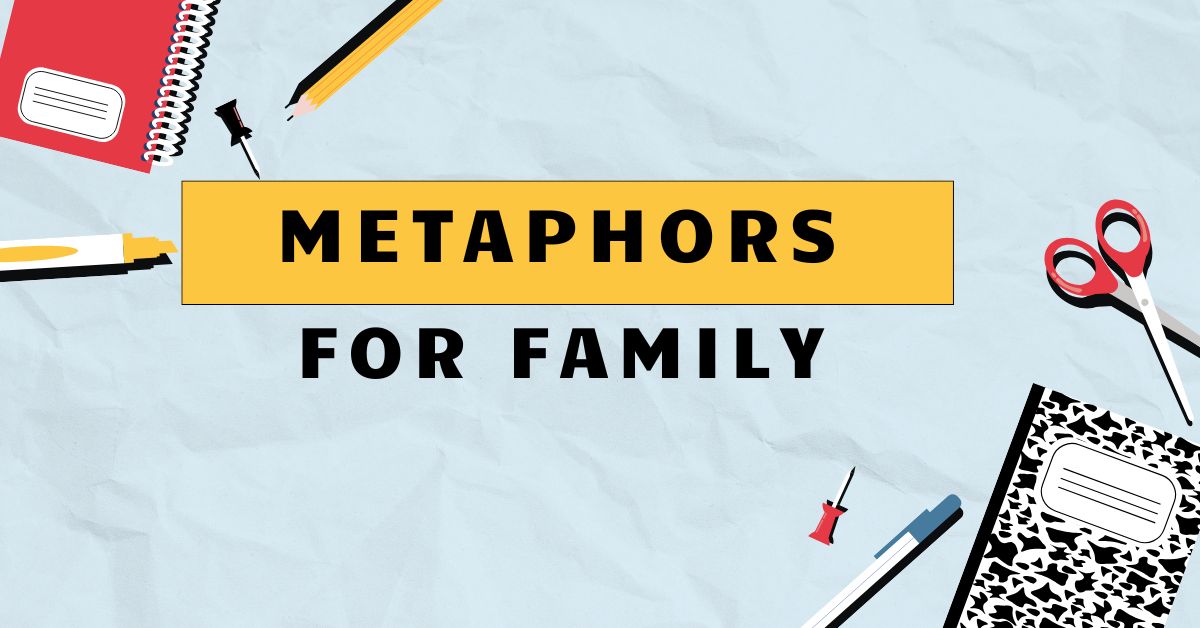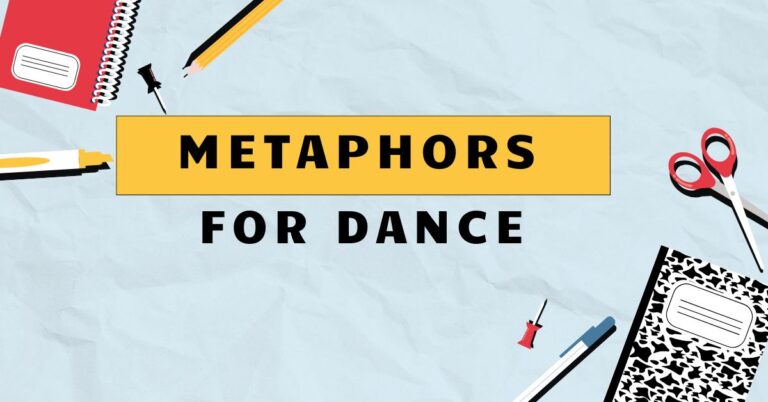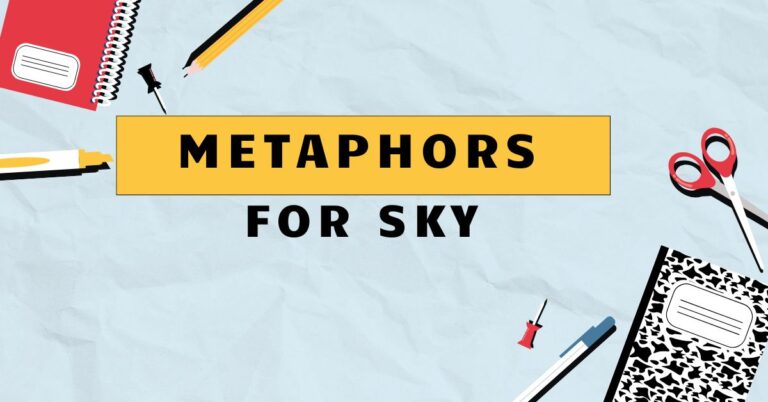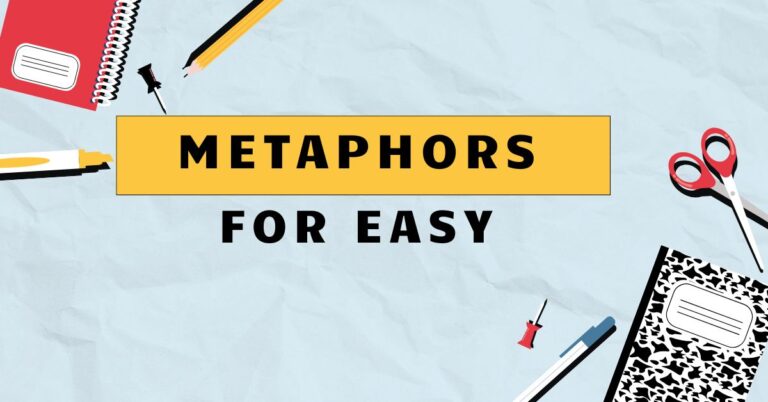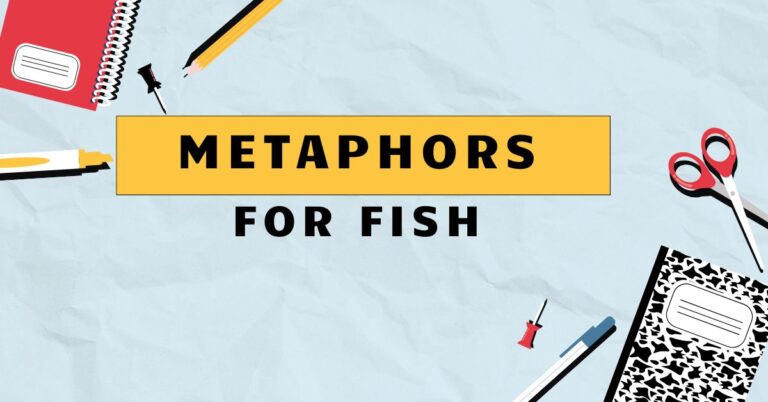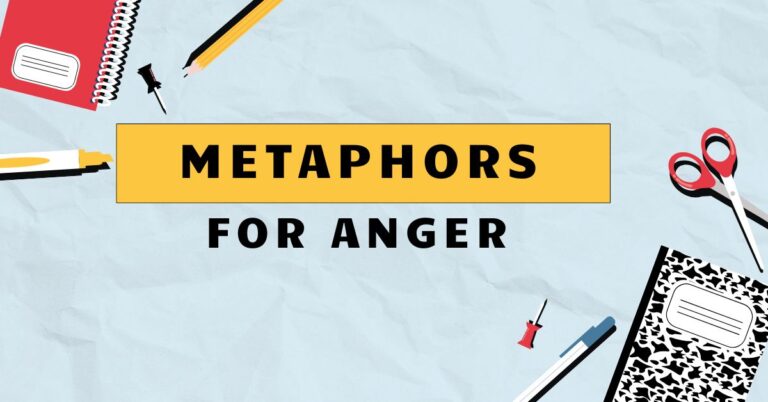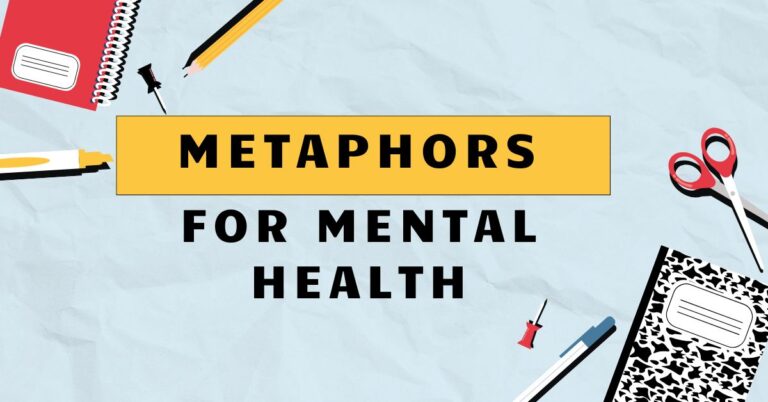Family Metaphors: Understanding Figurative Language
Metaphors are essential tools in the English language, enriching our communication by painting vivid pictures and conveying complex emotions in succinct ways. Understanding metaphors, especially those related to family, enhances our ability to interpret literature, appreciate nuanced conversations, and express ourselves more creatively.
This article delves into the world of family metaphors, exploring their structure, usage, and impact. It serves as a comprehensive guide for English language learners and native speakers alike who wish to deepen their understanding and application of this powerful figurative device.
Through detailed explanations, diverse examples, and practical exercises, this guide aims to make the concept of family metaphors accessible and engaging for all.
Table of Contents
- Definition of Family Metaphors
- Structural Breakdown of Family Metaphors
- Types and Categories of Family Metaphors
- Examples of Family Metaphors
- Usage Rules for Family Metaphors
- Common Mistakes with Family Metaphors
- Practice Exercises
- Advanced Topics in Family Metaphors
- Frequently Asked Questions
- Conclusion
Definition of Family Metaphors
A metaphor is a figure of speech that directly compares two unrelated things, asserting that one thing *is* another to highlight shared qualities or create a deeper understanding. Unlike similes, which use “like” or “as” to make a comparison, metaphors make a direct assertion.
Family metaphors, specifically, apply metaphorical language to describe aspects of family life, relationships, and dynamics. These metaphors can illuminate the complex emotions, roles, and experiences within a family unit by drawing parallels to more readily understood concepts.
Family metaphors function by transferring qualities from one domain (the source domain) to another (the target domain). For instance, if we say a family is a “well-oiled machine,” the source domain is a machine, and the target domain is the family.
The metaphor suggests that the family functions smoothly and efficiently, with each member playing a specific, coordinated role. This comparison helps us understand the family’s dynamics in a new and insightful way.
The power of family metaphors lies in their ability to evoke emotional responses and create vivid images, making abstract concepts more concrete and relatable.
The context in which a family metaphor is used significantly influences its interpretation. A metaphor used in a poem about family might carry a different weight than the same metaphor used in a casual conversation.
Literary contexts often allow for more complex and layered interpretations, while everyday conversations tend to favor simpler, more direct meanings. Understanding the context is crucial for accurately interpreting the intended message and appreciating the nuances of the metaphor.
Structural Breakdown of Family Metaphors
The structure of a family metaphor typically involves two key components: thetenorand thevehicle. The tenor is the subject being described (e.g., the family itself), and the vehicle is the object or concept to which the subject is being compared (e.g., a tree).
The effectiveness of a metaphor depends on the relationship between the tenor and the vehicle, and how well the shared qualities are highlighted.
The underlying mechanism of a metaphor involves identifying shared characteristics or qualities between the tenor and the vehicle. These shared qualities, often referred to as thegroundof the metaphor, are what make the comparison meaningful.
For example, in the metaphor “Our family is a fortress,” the ground might include strength, protection, and resilience. The fortress (vehicle) is understood to be strong and protective, and these qualities are then attributed to the family (tenor).
Understanding the structural elements of a metaphor allows for a deeper analysis of its meaning and impact. By identifying the tenor, vehicle, and ground, we can better understand the intended message and appreciate the subtleties of the figurative language.
This analytical approach is particularly useful in literary analysis and critical thinking, enabling us to unpack the layers of meaning embedded within metaphorical expressions. Recognizing the structural components also aids in creating effective metaphors, ensuring that the comparison is clear, relevant, and impactful.
Types and Categories of Family Metaphors
Family metaphors can be categorized based on various aspects of family life they represent. These categories help in analyzing and understanding the different ways metaphors are used to describe families.
Metaphors of Structure and Stability
These metaphors focus on the family’s foundation and how its members are interconnected. They often use imagery of buildings, trees, or other stable structures.
For example, describing a family as the “roots” of a community emphasizes their foundational role and long-term presence. These metaphors highlight the importance of stability and support within the family unit, suggesting that a strong foundation is essential for growth and resilience.
Metaphors of Relationships and Bonds
These metaphors describe the connections between family members, emphasizing the emotional ties and shared experiences. Examples include comparing family relationships to a “tangled web” or a “close-knit fabric.” These metaphors capture the complexity and intimacy of family bonds, highlighting both the supportive and potentially constricting aspects of these relationships.
Metaphors of Roles and Responsibilities
These metaphors focus on the roles each family member plays and their associated responsibilities. For instance, describing a mother as the “glue” holding the family together emphasizes her role in maintaining cohesion and harmony.
These metaphors often highlight the different contributions each member makes to the family dynamic, shedding light on the division of labor and the expectations placed on each individual.
Metaphors of Growth and Development
These metaphors illustrate how families evolve and change over time. Examples include comparing a family to a “seedling” that grows into a “mighty oak” or describing family life as a “journey.” These metaphors capture the dynamic nature of family life, highlighting the challenges and triumphs that families experience as they navigate different stages of development.
Metaphors of Conflict and Harmony
These metaphors describe the interplay between conflict and harmony within the family. Examples include comparing family disagreements to a “storm” that eventually passes or describing family unity as a “symphony” where each member plays a different instrument in harmony.
These metaphors acknowledge the inevitable conflicts that arise in family life while also emphasizing the importance of resolving disputes and maintaining a sense of unity.
Examples of Family Metaphors
Here are several examples of family metaphors, categorized to illustrate their diverse applications.
Metaphors for Family Relationships
This section explores metaphors used to describe the relationships between family members, highlighting the nuances and complexities of these bonds.
Below is a table containing examples of metaphors for family relationships, each illustrating a different aspect of how family members interact and connect.
| Metaphor | Explanation |
|---|---|
| “They are two peas in a pod.” | Describes siblings or family members who are very similar and close. |
| “She is the anchor of the family.” | Refers to someone who provides stability and support. |
| “He is the black sheep of the family.” | Describes someone who is different from the rest and doesn’t conform to expectations. |
| “Their relationship is a rollercoaster.” | Suggests a relationship with many ups and downs. |
| “She is the sunshine in his life.” | Indicates someone who brings joy and happiness. |
| “He’s her rock.” | Implies unwavering support and strength. |
| “They’re like oil and water.” | Describes family members who don’t mix well and often clash. |
| “She’s a second mother to me.” | Indicates a close, nurturing relationship with someone who isn’t the biological mother. |
| “He’s the spitting image of his father.” | Describes a son who looks very much like his father. |
| “They are joined at the hip.” | Suggests an inseparable bond between two family members. |
| “She is the heart of the family.” | Refers to someone who provides love, warmth, and emotional connection. |
| “He’s a chip off the old block.” | Describes a son who resembles his father in character or behavior. |
| “Their relationship is a battlefield.” | Suggests a relationship filled with constant conflict and arguments. |
| “She’s the glue that holds them together.” | Implies someone who maintains cohesion and unity within the family. |
| “He’s a lone wolf.” | Describes a family member who prefers to be alone and independent. |
| “They’re two sides of the same coin.” | Suggests family members who are different but connected. |
| “She’s the guiding light.” | Indicates someone who provides direction and wisdom. |
| “He’s the prodigal son.” | Refers to a family member who returns after a long absence or period of estrangement. |
| “They’re a house divided.” | Suggests a family with internal conflicts and disagreements. |
| “She’s the peacemaker.” | Implies someone who resolves conflicts and maintains harmony. |
| “He’s the family historian.” | Refers to someone who preserves and shares the family’s history and stories. |
| “They’re a tangled web.” | Suggests complex and intertwined family relationships. |
| “She’s the family cheerleader.” | Indicates someone who provides encouragement and support. |
| “He’s the family comedian.” | Refers to someone who brings humor and laughter to the family. |
Metaphors for Family Roles
This section explores metaphors used to describe the different roles family members play, highlighting the responsibilities and expectations associated with each role.
The table below presents metaphors for family roles, illustrating how different members contribute to the family dynamic and fulfill specific functions.
| Metaphor | Explanation |
|---|---|
| “He is the breadwinner of the family.” | Refers to someone who earns the primary income. |
| “She is the caretaker of the family.” | Indicates someone who provides care and support to other members. |
| “He is the protector of the family.” | Implies someone who safeguards and defends the family. |
| “She is the nurturer of the family.” | Suggests someone who provides emotional support and encouragement. |
| “He is the disciplinarian of the family.” | Refers to someone who enforces rules and maintains order. |
| “She is the mediator of the family.” | Indicates someone who resolves conflicts and promotes harmony. |
| “He is the advisor of the family.” | Implies someone who provides guidance and wisdom. |
| “She is the organizer of the family.” | Suggests someone who plans and coordinates family activities. |
| “He is the entertainer of the family.” | Refers to someone who brings humor and laughter. |
| “She is the historian of the family.” | Indicates someone who preserves and shares family stories. |
| “He is the problem-solver of the family.” | Implies someone who finds solutions to challenges. |
| “She is the cheerleader of the family.” | Suggests someone who provides encouragement and support. |
| “He is the anchor of the family.” | Refers to someone who provides stability and security. |
| “She is the compass of the family.” | Indicates someone who provides direction and guidance. |
| “He is the backbone of the family.” | Implies someone who provides strength and support. |
| “She is the heart of the family.” | Suggests someone who provides love and emotional connection. |
| “He is the voice of reason in the family.” | Refers to someone who provides logical and rational perspectives. |
| “She is the bridge of the family.” | Indicates someone who connects different family members. |
| “He is the guardian of the family.” | Implies someone who protects and safeguards the family’s well-being. |
| “She is the storyteller of the family.” | Suggests someone who shares family history and traditions. |
| “He is the support system of the family.” | Refers to someone who provides practical and emotional assistance. |
| “She is the nurturer of dreams within the family.” | Indicates someone who encourages and supports the aspirations of family members. |
| “He is the financial planner for the family’s future.” | Implies someone who manages the family’s finances and plans for the future. |
Metaphors for Family Characteristics
This section explores metaphors that describe the overall characteristics or qualities of a family unit, highlighting what makes each family unique.
The following table contains examples of metaphors for family characteristics, illustrating various aspects of a family’s identity and dynamics.
| Metaphor | Explanation |
|---|---|
| “Our family is a close-knit tapestry.” | Describes a family with strong, interwoven relationships. |
| “Their family is a well-oiled machine.” | Suggests a family that functions smoothly and efficiently. |
| “Our family is a fortress.” | Implies a family that is strong, protective, and resilient. |
| “Their family is a garden.” | Suggests a family that requires nurturing and care to thrive. |
| “Our family is a symphony.” | Describes a family where each member plays a unique role in harmony. |
| “Their family is a circus.” | Implies a chaotic and unpredictable family environment. |
| “Our family is a team.” | Suggests a family that works together towards common goals. |
| “Their family is a book.” | Describes a family with a rich history and many stories to tell. |
| “Our family is a river.” | Implies a family that flows through time, adapting to changes. |
| “Their family is a puzzle.” | Suggests a family with complex and interconnected relationships. |
| “Our family is a beacon.” | Describes a family that provides guidance and hope to others. |
| “Their family is a sanctuary.” | Implies a family that offers safety and comfort. |
| “Our family is a mosaic.” | Suggests a family composed of diverse individuals who create a beautiful whole. |
| “Their family is a forest.” | Describes a family with deep roots and strong connections. |
| “Our family is a quilt.” | Implies a family made up of different pieces that come together to create warmth and comfort. |
| “Their family is a ship.” | Suggests a family that navigates life’s challenges together. |
| “Our family is a library.” | Describes a family that values knowledge and learning. |
| “Their family is a flame.” | Implies a family that is passionate and vibrant. |
| “Our family is a constellation.” | Suggests a family of bright individuals connected by shared history and experiences. |
| “Their family is a dance.” | Describes a family with rhythmic and coordinated interactions. |
| “Our family is a melting pot of cultures.” | Suggests a family that embraces diversity and celebrates different traditions. |
| “Their family is an open book.” | Implies a family that is transparent and honest with each other. |
| “Our family is a compass, always guiding us home.” | Describes a family that provides direction and a sense of belonging. |
Metaphors for Family Dysfunction
Family metaphors can also highlight negative aspects or dysfunctions within a family. These metaphors often use imagery of decay, conflict, or brokenness.
The table below demonstrates metaphors for family dysfunction, illustrating the challenges and negative dynamics that can occur within a family unit.
| Metaphor | Explanation |
|---|---|
| “Their family is a house of cards.” | Suggests a fragile and unstable family that could collapse easily. |
| “Their family is a ticking time bomb.” | Implies a family with unresolved tensions and potential for explosion. |
| “Their family is a minefield.” | Describes a family environment filled with hidden dangers and potential conflicts. |
| “Their family is a broken record.” | Suggests a family stuck in repetitive and unproductive patterns. |
| “Their family is a pressure cooker.” | Implies a family with intense emotional pressure and limited outlets. |
| “Their family is a sinking ship.” | Describes a family facing overwhelming challenges and potential failure. |
| “Their family is a tangled web of lies.” | Suggests a family built on deceit and secrets. |
| “Their family is a war zone.” | Implies a family with constant conflict and hostility. |
| “Their family is a black hole.” | Describes a family that drains energy and emotions. |
| “Their family is a haunted house.” | Suggests a family burdened by past traumas and unresolved issues. |
| “Their family is a cage.” | Implies a family that restricts individual freedom and growth. |
| “Their family is a storm cloud.” | Describes a family that casts a shadow of negativity and despair. |
| “Their family is a desert.” | Suggests a family lacking emotional warmth and support. |
| “Their family is a maze.” | Implies a family with confusing and disorienting dynamics. |
| “Their family is a broken mirror.” | Describes a family that distorts self-perception and identity. |
| “Their family is a volcano, ready to erupt.” | Suggests a family with suppressed anger and potential for explosive outbursts. |
| “Their family is a black sheep farm.” | Implies a family where nonconformity is frowned upon, and individuality is suppressed. |
Metaphors for Family Growth and Change
Family metaphors can also illustrate how families evolve and change over time. These metaphors often use imagery of nature, journeys, or transformations.
The table below shows metaphors for family growth and change, illustrating the dynamic processes that families experience as they evolve.
| Metaphor | Explanation |
|---|---|
| “Our family is a tree growing stronger with each passing year.” | Describes a family that becomes more resilient over time. |
| “Their family is a river flowing towards the sea.” | Suggests a family progressing through life’s journey. |
| “Our family is a butterfly emerging from its cocoon.” | Implies a family undergoing significant transformation and growth. |
| “Their family is a seed sprouting into a flower.” | Describes a family developing from humble beginnings into something beautiful. |
| “Our family is a phoenix rising from the ashes.” | Suggests a family overcoming adversity and rebuilding itself. |
| “Their family is a journey with many twists and turns.” | Implies a family experiencing various challenges and adventures. |
| “Our family is a chapter in a never-ending story.” | Describes a family as part of a larger, ongoing narrative. |
| “Their family is a dance evolving with each generation.” | Suggests a family adapting to new rhythms and patterns over time. |
| “Our family is a garden blooming in different seasons.” | Describes a family experiencing various stages of growth and change. |
| “Their family is a bridge connecting past and future generations.” | Implies a family preserving traditions while embracing progress. |
| “Our family is a vine that grows stronger as it intertwines.” | Suggests a family whose bonds deepen over time. |
| “Their family is a tapestry being woven with new threads each day.” | Describes a family’s history and experiences coming together to create a rich pattern. |
| “Our family is a staircase climbing towards new heights.” | Implies a family striving for progress and achievement. |
Usage Rules for Family Metaphors
Using family metaphors effectively requires understanding certain rules. The primary rule is to ensure the metaphor isrelevantandappropriateto the context.
A poorly chosen metaphor can confuse or even offend the audience.
Clarityis another essential aspect. The connection between the tenor and the vehicle should be clear and easily understood.
Avoid metaphors that are too abstract or obscure, as they can hinder communication rather than enhance it. Consider your audience and their familiarity with the vehicle you are using.
Consistencyis also important. Once you establish a metaphor, maintain consistency in its application.
Shifting metaphors abruptly can create confusion and weaken the overall impact. If you start by describing a family as a “tree,” continue to use tree-related imagery to reinforce the metaphor.
Avoid mixing metaphors from different domains unless done intentionally for a specific effect.
Finally, be mindful ofcultural sensitivity. Metaphors can carry different meanings across cultures, so it’s important to be aware of potential misinterpretations.
A metaphor that resonates positively in one culture might be viewed negatively in another. Consider the cultural background of your audience and choose metaphors that are appropriate and respectful.
Common Mistakes with Family Metaphors
One common mistake is usingclichédmetaphors. Overused metaphors like “family is everything” can lose their impact and sound unoriginal.
Strive to create fresh and imaginative metaphors that offer new insights into family dynamics. Consider the specific qualities you want to highlight and choose a vehicle that effectively conveys those qualities.
Another frequent error is creatingmixed metaphors. This occurs when you combine two or more unrelated metaphors in a single statement, resulting in a confusing and illogical image.
For example, saying “Our family is a well-oiled machine sailing through rough waters” mixes the metaphor of a machine with that of a ship, creating a disjointed and nonsensical image. Maintain consistency and avoid blending incompatible metaphors.
Overextendinga metaphor is also a common pitfall. This happens when you try to force a metaphor beyond its natural limits, leading to strained and unnatural comparisons.
While it’s important to maintain consistency, avoid pushing the metaphor too far. Know when to stop and let the metaphor speak for itself without excessive elaboration.
Here are some examples of correct versus incorrect usage:
| Incorrect | Correct | Explanation |
|---|---|---|
| “Their family is a rollercoaster riding on thin ice.” | “Their family relationship is a rollercoaster.” | Avoid mixing unrelated metaphors. Focus on a single, coherent image. |
| “Our family is a tree, but also a car driving fast.” | “Our family is a strong and supportive tree.” | Maintain consistency and avoid abrupt shifts in imagery. |
| “The family is everything, a shining star, and a warm blanket.” | “The family is a warm blanket on a cold night.” | Avoid clichés and focus on a specific, evocative image. |
| “Their family is a well-oiled machine that also bakes cookies.” | “Their family is a well-oiled machine.” | Avoid overextending the metaphor. Stick to the core comparison. |
| “The family is a ship sailing on land.” | “The family is a ship sailing through life’s challenges.” | Ensure the metaphor is logical and consistent with the vehicle’s properties. |
Practice Exercises
Test your understanding of family metaphors with these exercises.
Exercise 1: Identify the Metaphor
Identify the family metaphor in each sentence and explain its meaning.
| # | Sentence | Metaphor | Explanation |
|---|---|---|---|
| 1 | “She is the glue that holds our family together.” | ||
| 2 | “He is the black sheep of the family.” | ||
| 3 | “Their family is a well-oiled machine.” | ||
| 4 | “Our family is a fortress.” | ||
| 5 | “They are two peas in a pod.” | ||
| 6 | “Their relationship is a rollercoaster.” | ||
| 7 | “She is the heart of the family.” | ||
| 8 | “He’s a chip off the old block.” | ||
| 9 | “Their family is a garden.” | ||
| 10 | “Our family is a symphony.” |
Exercise 2: Create Your Own Metaphor
Create a unique family metaphor for each of the following scenarios.
| # | Scenario | Metaphor |
|---|---|---|
| 1 | A family overcoming a difficult challenge. | |
| 2 | A family celebrating a special achievement. | |
| 3 | A family with diverse personalities and interests. | |
| 4 | A family that values tradition and history. | |
| 5 | A family that is always there for each other. | |
| 6 | A family that is constantly changing and evolving. | |
| 7 | A family that is very competitive. | |
| 8 | A family that is always laughing and having fun. | |
| 9 | A family that is facing a lot of stress and pressure. | |
| 10 | A family that is very close-knit and supportive. |
Exercise 3: Correct the Mistake
Identify and correct the mistake in each of the following sentences.
| # | Sentence | Corrected Sentence |
|---|---|---|
| 1 | “Their family is a rollercoaster sailing through the sky.” | |
| 2 | “Our family is a tree, but also a fast car.” | |
| 3 | “The family is everything, a shining star, and a warm blanket on a cold day.” | |
| 4 | “Their family is a well-oiled machine that also bakes cakes.” | |
| 5 | “The family is a ship sailing on land, but the anchor is the breadwinner.” | |
| 6 | “Our family is like a garden, but also a zoo with wild animals running around.” | |
| 7 | “Their family is a symphony of chaos and calm mixed together.” | |
| 8 | “The family is a tapestry of different colors, but also a race car speeding down the track.” | |
| 9 | “Our family is a puzzle, but also a rollercoaster, but also a garden.” | |
| 10 | “Their family is a fortress of love, but also a minefield of secrets waiting to explode.” |
Answer Key: Exercise 1
| # | Sentence | Metaphor | Explanation |
|---|---|---|---|
| 1 | “She is the glue that holds our family together.” | “Glue” | She provides cohesion and unity, preventing the family from falling apart. |
| 2 | “He is the black sheep of the family.” | “Black sheep” | He is different from the rest and doesn’t conform to expectations. |
| 3 | “Their family is a well-oiled machine.” | “Well-oiled machine” | They function smoothly and efficiently, with each member playing a specific role. |
| 4 | “Our family is a fortress.” | “Fortress” | They are strong, protective, and resilient. |
| 5 | “They are two peas in a pod.” | “Two peas in a pod” | They are very similar and close. |
| 6 | “Their relationship is a rollercoaster.” | “Rollercoaster” | Their relationship has many ups and downs. |
| 7 | “She is the heart of the family.” | “Heart” | She provides love, warmth, and emotional connection. |
| 8 | “He’s a chip off the old block.” | “Chip off the old block” | He resembles his father in character or behavior. |
| 9 | “Their family is a garden.” | “Garden” | They require nurturing and care to thrive. |
| 10 | “Our family is a symphony.” | “Symphony” | Each member plays a unique role in harmony. |
Answer Key: Exercise 3
| # | Sentence | Corrected Sentence |
|---|---|---|
| 1 | “Their family
is a rollercoaster sailing through the sky.” |
“Their family relationship is a rollercoaster.” |
| 2 | “Our family is a tree, but also a fast car.” | “Our family is like a strong and supportive tree.” |
| 3 | “The family is everything, a shining star, and a warm blanket on a cold day.” | “The family is a warm blanket on a cold day.” |
| 4 | “Their family is a well-oiled machine that also bakes cakes.” | “Their family is a well-oiled machine.” |
| 5 | “The family is a ship sailing on land, but the anchor is the breadwinner.” | “The family is a ship sailing through life’s challenges.” |
| 6 | “Our family is like a garden, but also a zoo with wild animals running around.” | “Our family is like a vibrant and diverse garden.” |
| 7 | “Their family is a symphony of chaos and calm mixed together.” | “Their family is a symphony with contrasting movements.” |
| 8 | “The family is a tapestry of different colors, but also a race car speeding down the track.” | “The family is a tapestry of different colors.” |
| 9 | “Our family is a puzzle, but also a rollercoaster, but also a garden.” | “Our family is a complex puzzle.” |
| 10 | “Their family is a fortress of love, but also a minefield of secrets waiting to explode.” | “Their family is a fortress with hidden cracks.” |
Advanced Topics in Family Metaphors
Delving deeper into family metaphors, we can explore their psychological and cultural implications. Metaphors not only reflect but also shape our understanding of family dynamics.
For instance, a family that frequently uses metaphors of war to describe their interactions may unconsciously reinforce a combative and adversarial dynamic.
In psychology, family metaphors can be used as therapeutic tools. By examining the metaphors a family uses to describe itself, therapists can gain insights into the family’s underlying beliefs, values, and patterns of communication.
This understanding can then be used to facilitate positive change and promote healthier relationships within the family.
Culturally, family metaphors vary significantly across different societies. Some cultures emphasize metaphors of collectivism and interdependence, while others prioritize metaphors of individualism and autonomy.
These cultural differences reflect differing values and expectations regarding family roles, responsibilities, and relationships. Understanding these cultural nuances is essential for effective cross-cultural communication and appreciation.
Moreover, the study of family metaphors intersects with other fields such as literature, sociology, and anthropology. In literature, family metaphors enrich narratives and provide deeper insights into characters and themes.
In sociology and anthropology, they offer valuable perspectives on family structures, social norms, and cultural values.
Frequently Asked Questions
Conclusion
Family metaphors are powerful tools for understanding and expressing the complexities of family life. By using metaphors effectively, we can gain deeper insights into family dynamics, relationships, and experiences.
Whether in literature, conversation, or therapy, family metaphors enrich our communication and enhance our appreciation of the intricate bonds that connect us. As you continue to explore and experiment with family metaphors, remember the importance of relevance, clarity, consistency, and cultural sensitivity.
With practice and attention to detail, you can master the art of using family metaphors to create vivid, meaningful, and impactful expressions.

